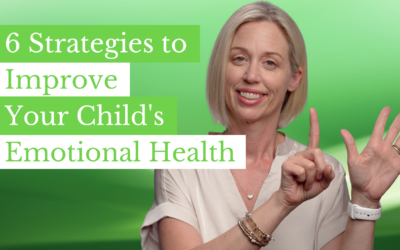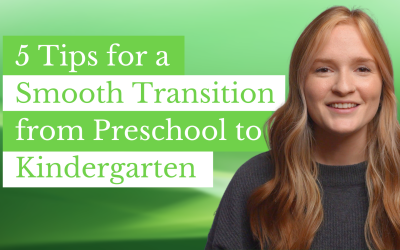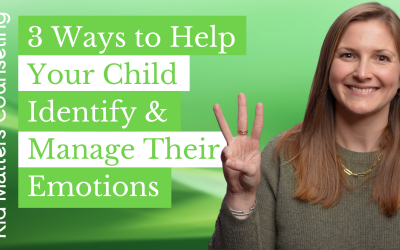ANXIETY IN CHILDREN
– A Parent’s Guide –
Types, Symptoms & Treatment
It’s difficult having an anxious child.
It can be stressful and exhausting!
But, anxiety in children can be helped!
Get informed & start the journey to helping your child’s anxiety!
Contents
select your chapter
CHAPTER 1
Generalized Anxiety Disorder (GAD)
Children who have generalized anxiety disorder, or GAD, feel a high amount of worry, nervousness, and fear.
This typically shows up as physical, emotional, and behavioral symptoms.
Their anxiety is focused on a number of different things and is severe enough to significantly hurt their ability to thrive in relationships, school work, or other activities.

Signs of Generalized Anxiety Disorder
Your child may be worried about their grades in school, being judged in social contexts, getting sick or hurt, losing a loved one, or be a perfectionist.
For these children, the worries they have are not proportionate to reality and they feel out of control of their worries
CHAPTER 2
Panic Disorder in Children
A panic attack is a sudden feeling of fear and anxiety that is very intense that takes several minutes to subside.
Attacks could occur at various rates such as one time per week for several months or every day for a couple of weeks followed by none for many weeks.
Children with panic disorder experience recurrent panic attacks that happen unexpectedly and are worried they will have more panic attacks or change their behavior related to the attacks such as attempting to avoid them.
An attack could start when a person is anxious or when they are calm, when awake or asleep.
Signs of Panic Disorder / Attacks
- Heart rate increasing
- trembling or numbness,
- shallow breaths or feelings of choking,
- feeling nauseous or dizzy,
- feeling hot and cold alternately,
- feeling detached from yourself and
- feeling like you will die.
People have about anticipating a panic attack include peers mistaking symptoms for other life-threatening emergencies, embarrassment about showing symptoms in public, and fear that they are “crazy” or out of control.
More on Panic Disorder
According to the CDC via National Institute of Mental Health (NIMH), 0.4% of children ages 8-15 will have a diagnosis of a panic disorder in any given 12-month period. (SOURCE)
CHAPTER 3
Separation Anxiety Disorder
in Children
Separation anxiety disorder is diagnosed when a child has anxiety about leaving a primary caregiver that is beyond what is developmentally expected at the child’s age.
With these children, excessive fear and symptoms related to separation from a caregiver last more than four weeks.
This condition often starts after a major life event that is stressful for the child such as a death in the family or a move to a new place.
Signs of Separation Anxiety Disorder
- Excessive anxiety and physical symptoms (like headaches and stomach aches or vomiting) when thinking about or actually going through separation,
- Worrying about an event causing separation such as getting lost or a caregiver dying,
- Fear of being alone or leaving the house, refusing to sleep away from caregivers, and having nightmares about separation.
- These symptoms must be severe enough that the child’s relationships, school work, or other daily activities are significantly impacted.
This may show in your child as withdrawal, anger or aggression toward the person causing separation, or a “demanding” personality in need of a lot of extra support and attention.
Signs of Social Anxiety Disorder
- Your child may become fearful while thinking about or being in social situations,
- Avoiding social situations,
- Fear of doing something socially inappropriate that will make others judge them.
The fear and anxiety may show up behaviorally in:
- Tantrums, crying,
- Freezing up and not being able to talk,
- Clinging to someone,
- Or shrinking to the floor or chair.
Their symptoms are severe enough that they cause great impact on their relationships, school work, or other daily activities.
WRAP-UP
If you would like help navigating your child’s anxiety, please give us a call. We specialize in helping anxious children.
Kid Matter Articles on Anxiety
6 Strategies to Improve Your Child’s Emotional Health
Raising a child is a rewarding yet challenging journey. It's natural to want your child to thrive, and a crucial part of that is their emotional well-being. Just like physical health, emotional health needs nurturing and support. Hi, I’m Lauren Clancy, a Child and...
5 Tips for a Smooth Transition from Preschool to Kindergarten
The transition from preschool to kindergarten is a big step for little ones, filled with both excitement and probably a little anxiety. As parents and caregivers, we want to do everything we can to ensure our children feel prepared and confident on their first day....
3 Ways to Help Your Child Identify and Manage Their Emotions
Whether it's the discomfort of a minor injury, a loss of a close friend or family member, or the stress from school and sports, children encounter many situations that stir intense emotions and parents often feel lost in how to support their child. Hi, I’m Liz Blaha,...
New Clients Call: (855) 586-1802
Current Clients: (855) 543-7687
Ask Us Anything!
We help anxious kids and frustrated parents. We serve Hinsdale & the Western Suburbs of Chicago.
Made with ♥︎ in Hinsdale, Illinois for Chicago
Built By Brand Your Practice.
Kid Matters Counseling, P.C. DISCLAIMER: This website and blog are for informational, educational and general discussion purposes only. It is understood that no guarantee or warranty arises from the information provided, discussed or commented upon in this website and blog nor does it constitute legal or other professional advice on any subject matter. Access to this website and blog is voluntary and at the sole risk of the user. If you think that you have a medical emergency (including clinical), call your doctor or 911 immediately. A licensed medical professional should be consulted for diagnosis and treatment of any and all medical conditions. While the information contained within this website and blog is periodically updated, no guarantee is given that the information provided is correct, complete, and/or up-to-date. See our complete Privacy Policy and Terms of Service.






CHAPTER 4
Social Anxiety Disorder in Children
If a child’s worry is focused on social situations where they may feel evaluated by others, they have social anxiety disorder.
They may be afraid of meeting new people or performing in front of others and the symptoms last for six months or more.
For these children, they have fears about interacting with peers their age, not just with adults.
Children with these symptoms believe their fears are real threats, but in reality, the fears are not proportionate with the situation at hand.